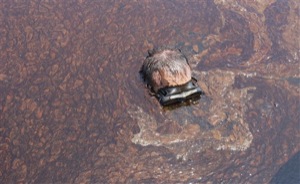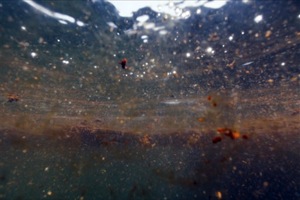san diego
Gulf of Mexico oil spill
San Diegans do their part
Published Thursday, 17-Jun-2010 in issue 1173
Weeks after the United States worst oil spill in history, the hope for relief couldn’t and (most likely) will not come soon enough. With thousands of gallons of crude spilling out into the Gulf of Mexico everyday, the Obama administration is pleading with BP to do more. Currently, BP is capturing about 630,000 gallons of oil everyday, although hundreds of thousands of gallons are still escaping into the Gulf. With the invested time, resources and continued loss of oil, residents from all over the United States are volunteering to help in the relief effort. But as the Gulf volunteers begin to pour into affected areas, many volunteers find themselves with little or no work to do.
Citing a lack of Hazmat suits for the large volume of volunteers, BP PLC say there simply is not enough work to do for all of the volunteers in light of this specific event. Clearing stones and debris is different from cleaning affected wildlife. In comparison to previous disasters, Hurricane Katrina brought in a vast number of volunteers. But the Gulf spill proves to be a more specialized task as opposed to rebuilding a house, due to the dangers and potentially life-threatening circumstances facing wildlife and volunteers. The danger to the health of a volunteer, given the unusual conditions of humidity, heat exhaustion and excessive exposure to crude, can be life-threatening without the proper equipment.
With the outpouring of donated funds and volunteers, localized San Diego businesses and volunteer programs are doing their part as well. Hubbs-SeaWorld Research Institute (HSWRI), SeaWorld Parks & Entertainment (a parent company of SeaWorld), Busch Gardens and Discovery Cove have offered their assistance with the oil spill. Offering resources, monetary donations, facilities, volunteers and their unique expertise, SeaWorld and HSWRI have been active in response to environmental disasters for years. Pioneering techniques in wildlife protection, rescue, and rehabilitation for animals affected by crude oil exposure, SeaWorld and HSWRI have the experience and knowledge on how best to help the affected regions.
Other sources of expertise and local relief efforts come in the form of the University of California San Diego’s Scripps Institute of Oceanography and the San Diego Zoo. Both efforts are studying the impact of the Gulf spill on the ecosystem, wildlife and long-term effects of millions of gallons of crude oil being introduced to an already fragile region of the country, five years after Hurricane Katrina. Scripps in particular, has sent their undersea glider to the Gulf Coast to study currents and conditions and to try and measure oil in the water. The glider that Scripps is sending to the Gulf Coast was scheduled to be deployed in the Pacific to study the effects of climate on California’s coast. However, in light of the oil spill the Scripps team is redirecting it to the Gulf. Scripps oceanographer Daniel Rudnick cited “national interest” as the reason for this redeployment.
Residents and businesses from all over San Diego County have volunteered their time and money to assist the affected region through varying specialized institutions and charitable organizations including the San Diego Red Cross. With our nation, our city, and our community looking on with shock and awe, volunteers ready to assist from every community are needed to help with the worst environmental disaster in United States history.
To offer donations with the American Red Cross, San Diego, visit www.sdarc.org.
|
|
Copyright © 2003-2025 Uptown Publications



